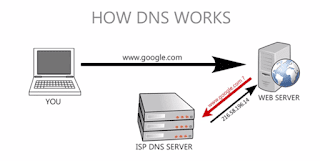Class Exercise - Research
1.1 Types of Information
Qualitative
Definition
Qualitative refers to a description that are such as describing about colors, smells, textures, taste and appearances.
Example
Ali is using black jacket.
Advantage
The materials can be classified with greater information.
Fast to observe the research data.
Disadvantage
Quantitative
Definition
Quantitative refers to a numbers or numerical information that are such as the length, weight, speed, time, cost and ages.
Example
She drink 2 cups of tea in the morning.
Primary
Definition
Primary is the data that you collected yourself.
Example
Direct Observation.
Interview.
Survey.
Advantage
The information is more accurate.
It is more flexible.
Disadvantage
It is expensive.
Time consuming.
Secondary
Definition
Secondary is the data that you received from external resources.
Example
Internet resources.
Televisions.
Stories told verbally.
Advantage
It is cheap.
Not time-consuming.
Disadvantage
The information is not accurate.
It is less flexible.
1.2 Purpose of Information
Operational support
Analysis
Decision making
Gaining advantage
The differences between operational, tactical & strategic decision making.
1.3 Sources of Information
Formal sources
Internal information
Internal information is only available for the company itself.
The information is only for private and accurate.
External information
External information comes in a variety forms such as in newspaper, magazines and the internet.
The information is open to public and not accurate.
Informal sources
Qualitative
Definition
Qualitative refers to a description that are such as describing about colors, smells, textures, taste and appearances.
Example
Ali is using black jacket.
Advantage
The materials can be classified with greater information.
Fast to observe the research data.
Disadvantage
Quantitative
Definition
Quantitative refers to a numbers or numerical information that are such as the length, weight, speed, time, cost and ages.
Example
She drink 2 cups of tea in the morning.
Primary
Definition
Primary is the data that you collected yourself.
Example
Direct Observation.
Interview.
Survey.
Advantage
The information is more accurate.
It is more flexible.
Disadvantage
It is expensive.
Time consuming.
Secondary
Definition
Secondary is the data that you received from external resources.
Example
Internet resources.
Televisions.
Stories told verbally.
Advantage
It is cheap.
Not time-consuming.
Disadvantage
The information is not accurate.
It is less flexible.
1.2 Purpose of Information
Operational support
Analysis
Decision making
Gaining advantage
The differences between operational, tactical & strategic decision making.
1.3 Sources of Information
Formal sources
Internal information
Internal information is only available for the company itself.
The information is only for private and accurate.
External information
External information comes in a variety forms such as in newspaper, magazines and the internet.
The information is open to public and not accurate.
Informal sources


Comments
Post a Comment